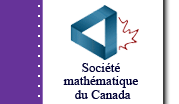|
GRADE 6
UNIT: Math - Data Management; Social Studies - Interaction - Pre-contact Indigenous Peoples of the Americas (Time: pre-1500)
THEME: Human Face of Mathematics - Mathematics in Aboriginal Culture
EQUIPMENT
- atlatl and dart
- pylon (or other easily seen target that cannot damage or be damaged by the dart)
- measuring tape
- coloured tape
- distance and speed chart
- stop watch
- calculator
- computers with a spreadsheet program
PREREQUISITE KNOWLEDGE:
Math - Data Management
D-8 Create classifications for data collected
D-9 Display data using
- histograms, line graphs (broken)
- frequency diagrams, tally
- circle graphs (fractional)
D-10 Discuss and determine the most suitable method(s) to display data
D-11 Use computer software to assist in the organization and display of data
D-15 determine, from a set of data, the
- mean (average)
- range, median, mode
Calculating speed (v=d/t)
LEARNING OUTCOMES:
Math - Data Management
D-1 Acquire data through
- experiments
- observation
- published information
D-2 Recognize that the data collected are affected by
- the nature of the sample
- the method of collection
- the sample size
- biases
D-3 Discuss factors that may distort the results of data collected; e.g.: gender, ethnic, socioeconomic, age
D-13 Discuss the reasonableness of data and results
D-14 Discuss, interpret, and ascribe meaning to the organized data
Social Studies - Interaction
Pre-contact Indigenous Peoples of the Americas (pre-1500)
Locate and gather information from various sources to organize and share on the following topics:
- Indigenous peoples of the Americas developed distinctive and diverse cultures.
- Arctic - Inuit
- Newfoundland - Beothuk
- Northeastern region - Huron, Algonquian (Micmac, Shawnee), Iroquois (Mohawk Oneida, Cayuga)
- Mississippi/Ohio River Basins - Hopewell, Adena (The Temple Mound Builders)
- Southeastern U.S.A. - Cherokee, Creek, Choctaw, Natchez, Caddo, Delaware
- Mexico - Anasazi, Aztec, Toltec, Olmec, Zapotec, Maya
- Brazil - Indians of the Amazon (Kayapo, Atroari, Caraja, Mura, Omagua)
- Caribbean - Arawak
- Argentina - Araucanian Indians
The lifestyles of Indigenous peoples were influenced by:
- the available resources
- the climate and the land
- interactions with other peoples
Teacher Set Up
- Using the coloured tape, mark off a throw line. Make sure there is ample space for students to throw the dart.
- About 10 metres from the throw line, place a pylon so the students have something to aim at. You may have to adjust target placement depending on your students.
Student Instructions
Background Information
- Research how the resources, climate, land and interactions with other peoples effected various pre-contact indigenous groups.
- Discover which groups used the atlatl and if so what it looked like.
- Research the origins of the atlatl specifically as it relates to the Aztecs daily life.
- Research should answer the following questions and back up with evidence:
- What regions of the world has the atlatl been used?
- How does the atlatl and dart vary by region and how has it varied over time?
- What design do you feel is the most effective?
- Why were the Aztecs conquered by the Spanish?
- Where is the atlatl used today?
Part 1: Maximum Distance & Speed
- Decide on 3 or 4 students from the class to throw. Record the distance and time traveled for each length.
- From the line, each person throws the dart 5 times without using the atlatl, aiming at the pylon.
- Measure each throw from the line to see how far the dart traveled.
- Record the distance and time the dart traveled for each person.
- Repeat steps 2-4 with the atlatl.
Part 2: Physical Characteristics of Thrower
- Measure the height of each thrower and their arm length.
Data Analysis
- Calculate the speed for each throw
- Determine which the maximum distance with and without the atlatl for each thrower.
- Determine the maximum speed (v=d/t) for each thrower
- Compare the results with and without atlatl using a spreadsheet and choosing an appropriate graph type
- Determine whether the dart went farther and faster with or without the use of the atlatl. Think of some ideas why.
- Answer the following questions:
- How does the physical attributes of the person throwing the atlatl effect the experiment?
- Is there a relationship between physical attributes, maximum distance thrown and speed? If so, what?
- What other factors would effect the experiment?
- Explain why the type of graph used is appropriate for the data.
- Discuss how the experiment could be changed to have more accurate results.
Lessons for Beginner Atlatl Users - Grade 6 PDF
Lessons for Atlatl Users with Some Experience - Grade 6
Atlatl Home Page
|

